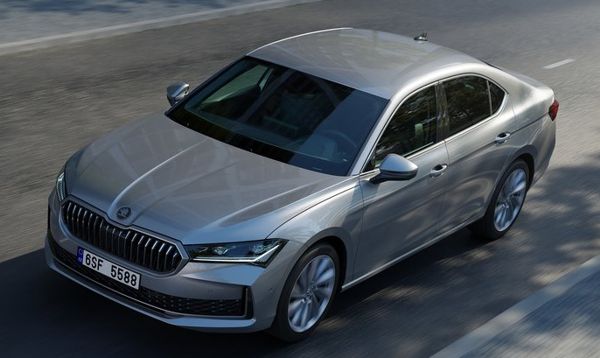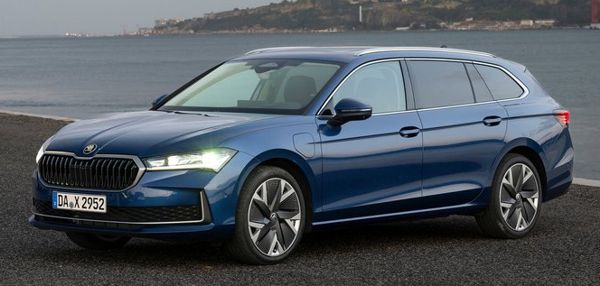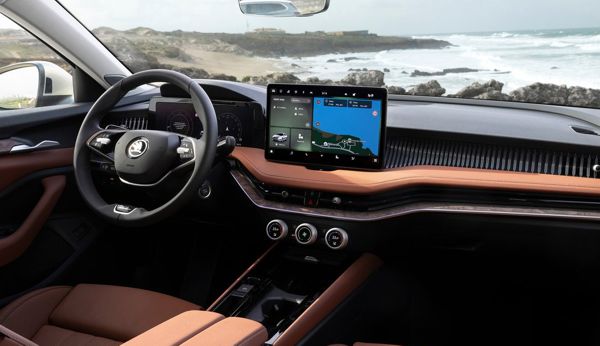Published
on 3
May 2024
|
All rights reserved.
|
|
|
 |
|
The
new Skoda Superb feels more upmarket but remains good value.
|
|
The 4th generation Skoda
Superb is no longer built in Czech Republic. Its production has been
shifted to Volkswagen’s plant in Bratislava, Slovakia. That doesn’t
mean the car was developed by Volkswagen though. On the contrary, Skoda
owns the project called Beta+ that gives birth to both the new Superb
and VW Passat. It is engineered 100 percent by the Czech manufacturer.
As before, the Superb is the largest car of Skoda and is built on the
Volkswagen group platform shared with Passat. In this generation, it
rides on the MQB Evo platform, whose name suggests that it is only a
mild evolution from the last generation’s MQB platform. Everything is
predictably familiar, including the car’s packaging. It is 50mm longer
than the old car, marginally narrower and taller while wheelbase is
practically unchanged at 2837 mm. The exterior design is familiar, too.
A wider, diamond-shape front grille is perhaps its biggest change, yet
that is never shouty. The Skoda’s design is neat and graceful but, as
you can expect, a bit conversative. It won’t set you on fire, nor it
would offend any buyers.
 |
|
No matter
mechanical or equipment, there is little to separate the Skoda and VW
Passat.
|
|
As always, the Superb is meant to be a safe and practical choice for
customers looking for a big family car or entry-level luxury. Space,
especially luggage-wise, is definitely its strength. The large-selling
wagon body offers a class-leading loading space of 690 liters with rear
seats in place. The alternate sedan body is actually a hatchback. Cabin
space is equally generous, offering good amount of rear head and leg
room for tall adults.
Quality perception is lifted noticeably from the last generation. The
interior design looks upmarket and tasteful, and trimmed with generally
high-quality materials. Only the 3 rotary knobs at center console
disappoint with their flimsy plastics, but their presence does make
life easier to control air-con and audio setting, unlike some rivals
which rely solely on touchscreen. The Skoda’s touchscreen is suitably
large at 13-inch, whose graphics clear and Volkswagen’s latest software
is much more logically layout than the earlier versions. In conjunction
with the physical switches, it is easy to use.
 |
|
Quality
perception is lifted noticeably from the last generation.
|
|
Don’t expect major
leap in driving dynamics. The Skoda is not meant to take on BMW or
Mazda. Its handling is safe and predictable. Steering is never sharp or
feelsome but responds consistently. Body control is a little relaxed,
but that manner matches its pursuit for comfort. The soft suspension
soaks up bumps brilliantly, especially if you have opted for DCC Pro
adaptive dampers, which can vary compression and rebound rates
individually. Very little wind noise can be heard in the cabin when
cruising on highway, making the new Superb a possible replacement for
small executive sedans.
One thing a new generation model should improve is efficiency. The new
Superb might rely on existing Volkswagen group’s internal combustion
engine ranges, but it can seek lower consumption from reduced drag. The
new body is not only visibly smoother but actually reduces drag
coefficient from 0.30 to 0.25. That’s for the wagon. Hatchback body is
even smoother at 0.23.
 |
|
Wagon offers
class-leading luggage space of 690 liters with rear seats in place.
|
|
Expect most of the
sales will go to the 1.5 eTSI engine, whose small “e” denotes mild
hybrid. A 48V starter generator assists acceleration and recaptures
energy from braking. The EA211 Evo 2 engine runs sophisticated cylinder
deactivation (ACT), Miller-cycle combustion and even uses a variable
geometry turbo to cut turbo lag. It is still at the sharp end of the
competition. Power output might sound average at 150 hp and 184 lbft,
but working with electric assist performance feels adequate even on a
large car like this. Its operation is mostly smooth and refined. Ditto
the 7-speed DSG gearbox. It returns 53 mpg and emits only 120 g/km of
CO2, remarkable for a petrol-powered large car.
For more power, you might opt for 2.0 TDI diesel (150 hp or 193 hp) or
2.0 TSI petrol (265 hp) – the latter must mate with 4motion all-wheel
drive. Fleet drivers might choose the eHybrid model which combines the
1.5 TSI engine with an electric motor and 25.7kWh battery for 204 hp.
However, traditionally buyers for Skoda would opt for the simplest and
cheapest engine, as value is what Skoda stands for.
As Ford, Opel and Renault already withdrew from conventional large
sedan/wagon segment, the Skoda might gain some breathing space and even
possibly take the sales crown in Europe. Volkswagen Passat used to have
an upper hand, but now its fate is controlled by Skoda, and the prime
time of Superb is finally coming.
|
Verdict:     |
|